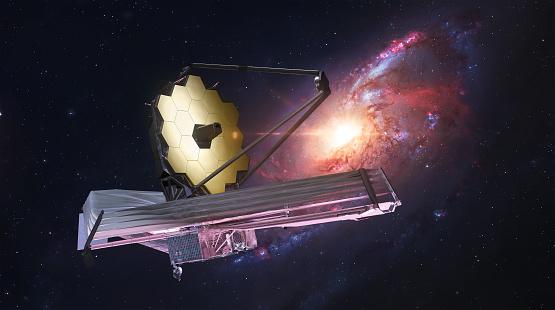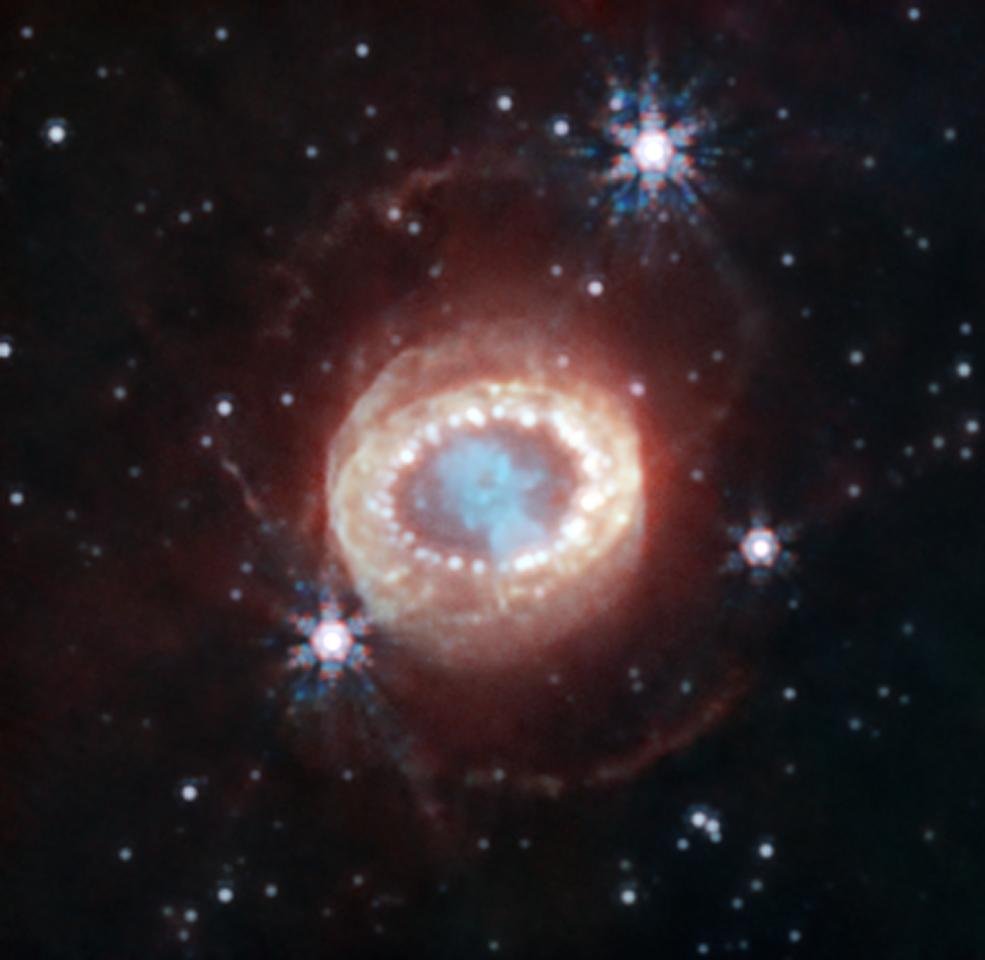James Webb Space Telescope (JWST) revealed on Thursday (31) Unprecedented details of one of the most observed supernovas near Earth in modern times: the supernova named SN1987A. When this astronomical event occurred in 1987, it triggered a starburst bright enough to be seen from our planet 168,000 light-years away.
Produced from the extraordinary consequences of the death of a giant star, this supernova is in the Large Magellanic Cloud, a smaller galaxy orbiting the Milky Way. SN1987A has been widely observed since February 1987 in wavelengths ranging from gamma rays to radio waves.
But even some of the most powerful observations made by the Hubble, Spitzer, and Chandra X-ray space telescopes did not match the richness of detail currently achieved by JWST. Space Telescope’s Near Infrared Camera (NIRCam) RStructural features of a never-before-seen supernova revealed.
Details of supernova structure
The main image of supernova 1987A, shown by JWST, reveals a bluish central structure: These are clouds of gas and dust ejected by the explosion. “The dust is so dense that even the near-infrared light Webb detected cannot pass through the dust.The official statement says it “makes a dark ‘hole’ in the keyhole.”
Surrounding this false hole is an equatorial ring and a reddish half-moon structure, the remnants of debris ejected tens of thousands of years ago, even before the supernova explosion. The “hot spots” already present throughout the ring are signs of the shock wave of a stellar event of this nature.
Going beyond its predecessors, JWST found an unprecedented feature in supernova remnants: tiny crescent-shaped structures. According to the telescope team, these shapes depict the outer layers of gas from the big bang.
Eyes on a possible neutron star

One of the natural consequences of a terrifying supernova explosion is the formation of a neutron star (if the star were larger the other would be a black hole). However, this object, which is dense enough to form neutrons by combining protons and electrons, was not found in SN 1987A.
However, there is indirect evidence of their presence in X-ray emissions detected by NASA’s Chandra X-ray and NuStar observatories and ALMA in Chile’s Atacama Desert. For these observers The neutron star may be “hidden” in dust clumps.
Mikako Matsuura, leader of the current study, agrees. for him, “The dust grains absorb the light of the neutron star, which is probably why we haven’t detected it yet.”
Did you like the content? Follow the latest discoveries from the James Webb Telescope and NASA at TecMundo, and also have the opportunity to learn about how telescope lenses have contributed to the evolution of astronomy.
Source: Tec Mundo
I’m Blaine Morgan, an experienced journalist and writer with over 8 years of experience in the tech industry. My expertise lies in writing about technology news and trends, covering everything from cutting-edge gadgets to emerging software developments. I’ve written for several leading publications including Gadget Onus where I am an author.












